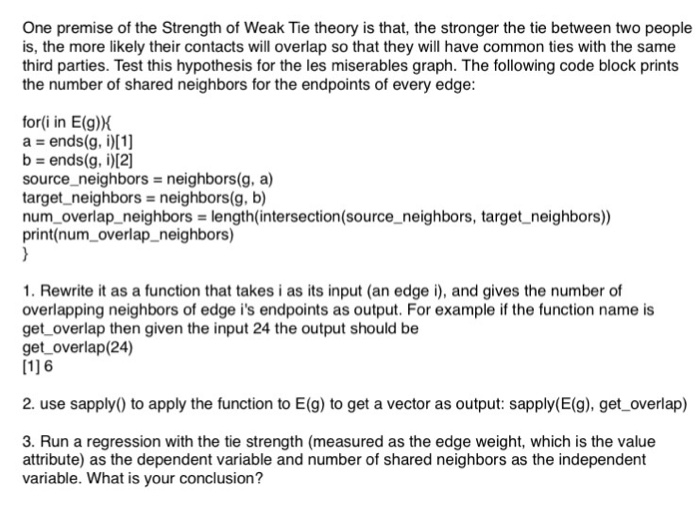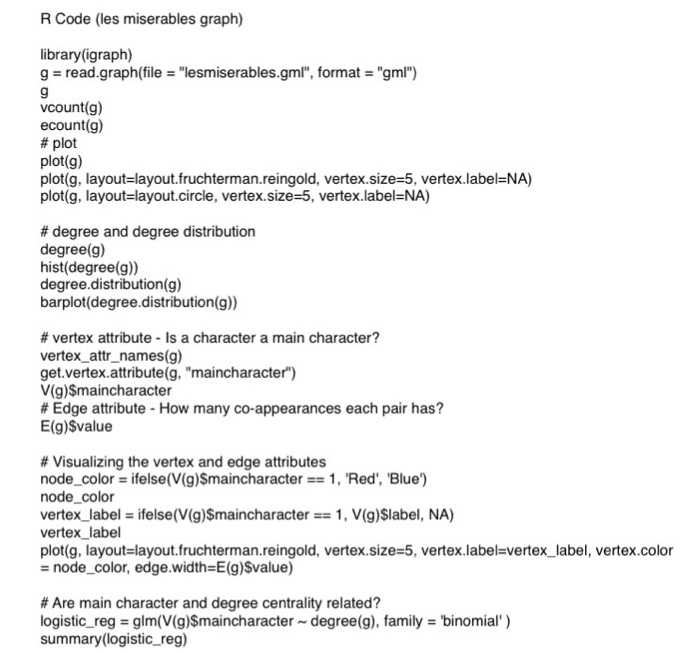Answered step by step
Verified Expert Solution
Question
1 Approved Answer
The R Program code https://www.dropbox.com/s/bjc8nfhf9b0mh4l/TheStrengthofWeakTiesC1983.pdf?dl=0 https://www.dropbox.com/s/rtrq7wk0qjf11jk/lesmiserables.gml?dl=0 One premise of the Strength of Weak Tie theory is that, the stronger the tie between two people is,
The R Program code
https://www.dropbox.com/s/bjc8nfhf9b0mh4l/TheStrengthofWeakTiesC1983.pdf?dl=0
https://www.dropbox.com/s/rtrq7wk0qjf11jk/lesmiserables.gml?dl=0


Step by Step Solution
There are 3 Steps involved in it
Step: 1

Get Instant Access to Expert-Tailored Solutions
See step-by-step solutions with expert insights and AI powered tools for academic success
Step: 2

Step: 3

Ace Your Homework with AI
Get the answers you need in no time with our AI-driven, step-by-step assistance
Get Started


